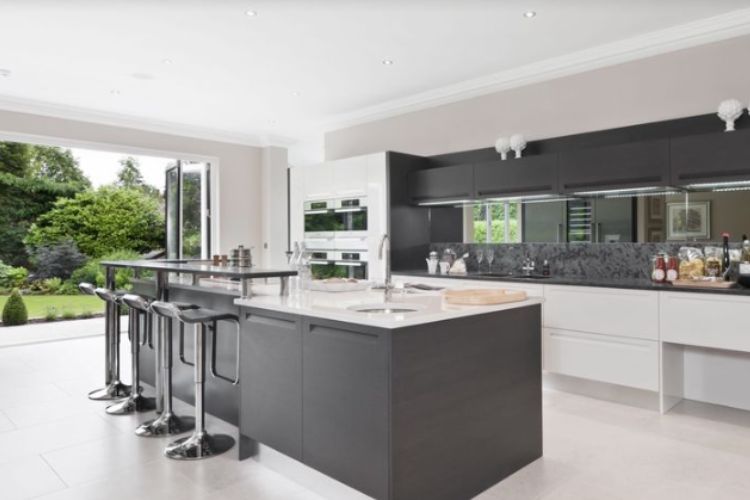Arranging bedroom furniture can be a challenging task, but considering the size and shape of the room, the function of the space, and your personal preferences are crucial in creating a comfortable and well-designed space. Whether you have a small bedroom, a master bedroom, or a kids' bedroom, specific tips and tricks can help maximise the space. This article will explore the basic principles of bedroom furniture arrangement, step-by-step guides, and useful tips to create the perfect bedroom layout. Let's transform your bedroom into a functional and stylish oasis!
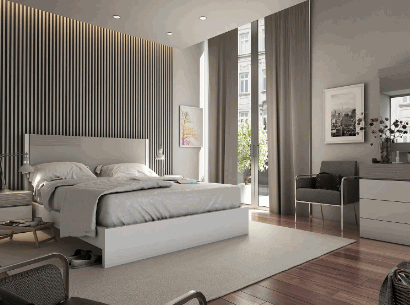
Contents
Factors to Consider Before Arranging Bedroom Furniture
Before arranging bedroom furniture, it is essential to consider several factors to ensure optimal functionality and aesthetics. Factors such as the size and shape of the room, the intended function of the space, personal preferences, and specific needs play a crucial role in determining the layout and design of the bedroom.
When working with a smaller bedroom, optimising space utilisation becomes even more critical. Choosing multi-functional furniture pieces like a bed with built-in storage or a compact desk that can serve as both a workspace and a vanity can help maximise every inch of the room.
Considering your personal style is also key. Whether you prefer a minimalist, cosy, or eclectic design, aligning the furniture choices with your tastes can create a space that truly reflects your personality. It's essential to strike a balance between functionality and aesthetics for a harmonious bedroom layout.
Size and Shape of the Room
The size and shape of the room significantly influence how bedroom furniture should be arranged. Factors such as room dimensions, architectural features, and available space dictate the placement of key elements like the bed, storage units, and seating areas.
- For a small rectangular bedroom, it's best to place the bed along the longest wall to maximise space.
- Consider incorporating multi-functional furniture like a storage bed or a bedside table with built-in drawers for added storage without cluttering the room.
- Opt for vertical storage solutions such as tall chests of drawers to utilise the height of the room efficiently.
In contrast, a square bedroom layout allows for more flexibility in furniture placement, enabling you to create a cosy seating area in a corner.
Balancing furniture proportions is crucial to ensure a harmonious and functional arrangement.
The function of the Room
Understanding the intended function of the bedroom is crucial when arranging furniture. Whether the room is primarily for sleeping, relaxing, studying, or working, the furniture layout should support and enhance the room's purpose while ensuring comfort and functionality.
For a bedroom meant for relaxation, consider a cosy reading nook with a comfortable chair and a small table for books and a cup of tea. If the room serves as a study area, a spacious desk with adequate storage is essential. In workspaces, ergonomic chairs and good lighting are key components to improve productivity. Always ensure that the flow of the room is unobstructed, enabling easy movement and access to essential items.
Choosing versatile furniture pieces that offer storage solutions can maximise space utilisation and keep the room organised.
Personal Preferences and Needs
Personal preferences and individual needs play a significant role in determining how bedroom furniture should be arranged. Factors such as style, comfort, storage requirements, and ergonomic considerations should be taken into account to create a personalised and functional space.
When arranging furniture, it's essential to consider the layout of the room and how each piece fits within the overall design scheme. For those who prefer a minimalist approach, opting for sleek, streamlined furniture can create a clean and modern look. On the other hand, individuals with a penchant for traditional styles may choose ornate, classic pieces to convey a sense of elegance.
Incorporating storage solutions is crucial for maintaining a clutter-free environment. Whether it's utilising under-bed storage containers, installing floating shelves, or selecting furniture with built-in compartments, maximising storage potential can enhance both the aesthetic appeal and functionality of the space.
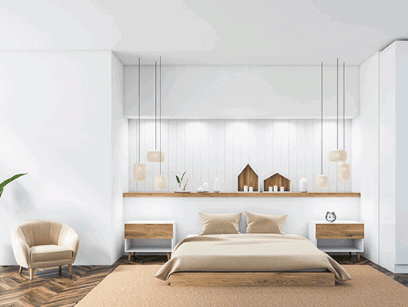
Basic Principles of Bedroom Furniture Arrangement
The arrangement of bedroom furniture is guided by fundamental principles such as balance, symmetry, proportion, and scale. Ensuring proper traffic flow and accessibility within the room while maintaining visual harmony are key factors in creating a well-designed and functional bedroom space.
Balance in furniture arrangement involves distributing visual weight evenly throughout the room. This can be achieved by placing larger or heavier pieces opposite each other to create a sense of equilibrium. Symmetry, on the other hand, focuses on mirroring elements across a central axis, lending a sense of order and stability. Proportion ensures that the size of furniture pieces complements the room size, preventing overcrowding or vast empty spaces.
Scale, crucial for a harmonious layout, refers to how furniture sizes relate to each other and the room as a whole. To optimise the bedroom layout, start by positioning the bed as the focal point and organising other pieces around it based on their functions and visual impact. Think about practicality, comfort, and aesthetics when arranging bedside tables, chests of drawers, and seating areas.
Balance and Symmetry
Achieving balance and symmetry in bedroom furniture arrangement involves distributing visual weight evenly across the space. This can be accomplished by pairing matching elements or creating a focal point that anchors the room's design.
One effective way to achieve balance is by ensuring that furniture pieces are proportionate to the size of the room. For example, if you have a large bed dominating one side of the room, balance it out by adding a similarly sized chest of drawers or a pair of bedside tables on the opposite side. This not only creates symmetry but also prevents the room from feeling lopsided.
Consider the placement of accessories such as lamps, artwork, or decorative objects. Grouping them in sets of threes or fives can help create visual harmony and avoid a cluttered look.
Proportion and Scale
Considering proportion and scale is essential when arranging bedroom furniture to ensure that each piece fits harmoniously within the room. Balancing larger furniture items with smaller accents and maintaining proper scale can prevent overcrowding and create a cohesive design.
One key aspect to keep in mind is the size of the furniture in relation to the room's dimensions. It's crucial to measure the space accurately to avoid ending up with pieces that overwhelm or underutilise the room. Choosing furniture that is appropriately sized for the room can make a significant difference in how spacious and inviting the bedroom feels. Paying attention to the flow of movement within the room is important. Placing furniture in a way that allows for easy navigation and doesn't obstruct pathways can improve both the functionality and aesthetic of the space.
Traffic Flow and Accessibility
Efficient traffic flow and accessibility are key considerations when arranging bedroom furniture. Ensuring that pathways are clear, doors can be fully opened, and essential areas are easily reachable enhances the room's functionality and comfort.
Optimising traffic flow not only contributes to the visual appeal of the bedroom but also fosters a sense of space and organisation. By strategically placing furniture items like the bed and dressers, one can create a harmonious layout that promotes seamless movement throughout the room. It's advisable to maintain a balance between aesthetics and practicality, ensuring that every piece serves a purpose without obstructing the natural flow. Incorporating multifunctional pieces such as storage ottomans or wall-mounted shelves can further maximise space utilisation and convenience.
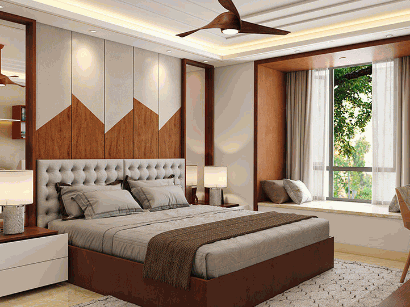
Arranging Furniture for Different Types of Bedrooms
Arranging furniture in different types of bedrooms requires a bespoke approach to accommodate varying sizes, functions, and users. Whether it's a small bedroom, a main bedroom, or a children's room, the furniture layout should reflect the specific needs and characteristics of each space.
- For small bedrooms, maximising space is crucial. Consider using multi-functional furniture such as storage beds or wall-mounted shelves to save space.
In the main bedrooms, focus on creating a cosy and relaxing atmosphere. Place the bed as the focal point and add bedside tables for convenience.
- Utilise elegant chests of drawers and occasional chairs for added luxury.
Children's bedrooms require a balance between play and rest.
- Opt for durable, easily movable furniture that can adapt to changing needs as they grow.
Small Bedrooms
In small bedrooms, maximising space and functionality is crucial when arranging furniture. Utilising space-saving solutions, incorporating mirrors to create the illusion of more space, and opting for multi-functional pieces can help optimise the layout and design of a compact bedroom.
In terms of small bedroom design, every inch counts.
Strategic placement of furniture is key to making the most of a limited space. Consider utilising vertical storage options like tall dressers or shelving units to take advantage of wall space while keeping the floor area clear. Incorporating foldable or stackable furniture pieces can provide flexibility for changing needs without overcrowding the room. By combining these practical design elements, you can create a cosy and functional retreat within the constraints of a small bedroom.
Find out more: Bedroom Furniture For Small Rooms
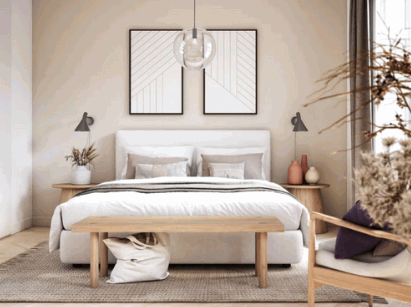
Master Bedrooms
Master bedrooms offer more space and flexibility for furniture arrangement, allowing for the inclusion of additional seating areas, storage solutions like chairs and drawers, and personalised elements that enhance comfort and luxury.
When considering the layout of a master bedroom, it is crucial to create designated zones that cater to different activities. By incorporating a cosy seating area near a window or a fireplace, you can establish a relaxing retreat within the room. Utilising multifunctional pieces such as ottomans with hidden storage or benches with built-in compartments can maximise both seating options and practical storage solutions, ensuring a clutter-free environment.
Along with functionality, integrating decorative elements like accent cushions, artwork, and chic lighting fittings can inject personality and style into the space. These decorations not only elevate the aesthetic appeal but also contribute to a cohesive design scheme that reflects the homeowner's taste and preferences.
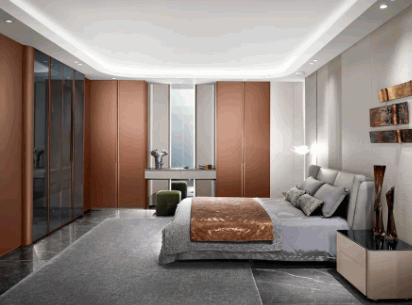
Kids' Bedrooms
Arranging furniture in kids' bedrooms involves considering elements that cater to their specific needs and preferences. Incorporating playful design elements, functional storage solutions, and durable furniture pieces can create a vibrant and child-friendly space.
When arranging furniture in a kid's room, think about incorporating versatile pieces like modular furniture that can adapt to their changing needs as they grow. Utilising multi-functional furniture pieces such as loft beds with built-in desks or storage underneath can optimise space in smaller rooms.
Consider incorporating colorful rugs and curtains that add warmth and vibrancy to the room while also providing a cozy play area. Open shelving units and bins can help keep toys and belongings organized, making it easier for children to access and tidy up their space.
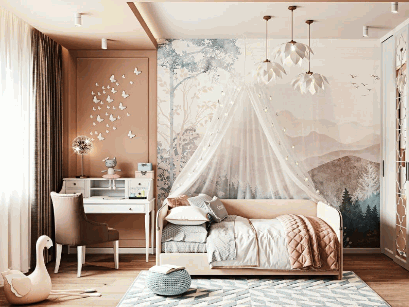
Step-by-Step Guide to Arranging Bedroom Furniture
- A step-by-step approach can simplify the process of arranging bedroom furniture effectively. Starting with the bed as the focal point, considering storage options, arranging seating areas for functionality and comfort, and adding finishing touches can transform a bedroom into a well-designed and inviting space.
- One key aspect to keep in mind is the placement of the bed. Positioning it against the longest wall can create a sense of balance and maximise space. Bedding choices such as duvet covers, pillows, and throws can also contribute to the overall theme.
- Next, evaluate the storage needs and opt for furniture pieces that offer both functionality and style. Seating areas can be enhanced with comfortable chairs or benches, complementing the overall ambiance.
- Lastly, décor accents like wall art, mirrors, and rugs can tie the room together beautifully.
Start with the Bed
The bed serves as the focal point of a bedroom and should be the starting point for furniture arrangement. Positioning the bed in a way that maximises space, natural light, and visual appeal sets the foundation for the room's layout and design.
When considering where to place the bed, it's essential to take into account the room's dimensions and door placement. Placing the bed against a solid wall often provides a sense of security and stability while ensuring a good flow within the room. Placing the bed opposite the door can create a visually appealing focal point upon entering the room.
Orientation of the bed is crucial for creating a harmonious space. For better energy flow, Feng Shui principles suggest placing the bed away from direct alignment with the door and not under a window. Ensuring a good balance of space around the bed promotes a sense of calm and relaxation.
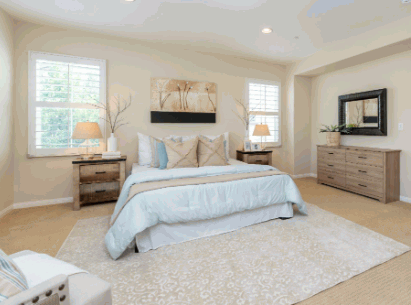
Consider Storage Options
Efficient storage solutions are essential when arranging bedroom furniture to maintain a clutter-free and organised space. Incorporating drawers, shelves, and other storage units strategically can optimise functionality while enhancing the room's aesthetics.
When considering storage options for bedroom furniture, it's important to think creatively to make the most of the available space. Utilising under-bed storage containers can be a brilliant way to store seasonal clothing, extra linens, or shoes without taking up any additional floor space. Invest in multi-functional furniture pieces, such as ottomans with hidden storage or bed frames with built-in drawers, to maximise storage capacity while keeping the room visually appealing.
Another effective tip is to use vertical storage solutions, such as tall bookshelves or wall-mounted cabinets, to make use of vertical space and free up floor space for a more open feel. By incorporating a mix of storage options, you can create a cohesive and organised bedroom that meets both your functional and aesthetic needs.
Arrange Seating Areas
Creating functional and inviting seating areas in the bedroom enhances comfort and versatility. Placing chairs, benches, or cosy nooks strategically can provide additional relaxation spots and add a touch of style to the room.
When considering the layout of a bedroom, incorporating a cosy reading corner with a plush armchair and a small side table can create a private sanctuary for unwinding with a book or enjoying a morning coffee. Installing a window seat bathed in natural light not only offers a picturesque spot for relaxation but also maximizes the use of space in the room while blending functionality with aesthetics. To infuse a sense of luxury, opting for an elegant chaise longue or a velvet-upholstered bench at the foot of the bed can elevate the room's design and offer a chic seating arrangement.
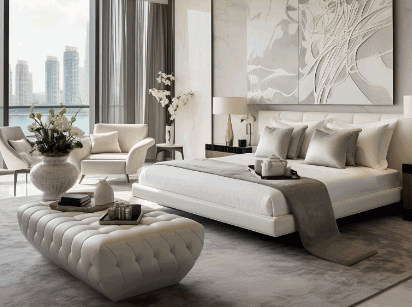
Add Finishing Touches
Adding finishing touches to bedroom furniture arrangements can elevate the overall look and feel of the room. Incorporating lighting elements, decorative accents, and personal touches can create a cohesive and visually appealing space.
In terms of lighting selection, opting for soft, warm hues can add a cosy and inviting atmosphere, perfect for relaxation. Consider layering different light sources such as bedside lamps, overhead fixtures, and dimmable lights to achieve versatility in lighting levels.
Personalising the space with items that hold sentimental value or reflect your interests can infuse character into the room. Displaying photographs, artwork, or heirlooms can make the bedroom feel uniquely yours.
Tips and Tricks for Bedroom Furniture Arrangement
Incorporating smart tips and tricks can enhance the efficiency and aesthetic appeal of bedroom furniture arrangement. Utilising mirrors to create the illusion of space, maximising vertical storage with shelves, and embracing multi-functional furniture pieces are just a few strategies to optimise the room layout.
Another key aspect to consider is the strategic placement of lighting fixtures to highlight certain areas or create a cosy ambiance. Experimenting with different textures and colours for bedding, curtains, and rugs can add depth and personality to the room.
For smaller bedrooms, consider utilising space-saving techniques such as loft beds or built-in storage solutions to maximise every inch of available space. Incorporating a compact workspace area into the bedroom setup can make the room more functional and versatile.
In terms of design ideas, mixing and matching furniture styles can create an eclectic and visually interesting look. Introducing plants and greenery can bring a touch of nature indoors and promote a sense of tranquillity.
Use Mirrors to Create Illusion of Space
Mirrors are versatile decorative elements that can visually expand the perceived size of a room. Placing mirrors strategically in a bedroom can reflect light, create depth, and enhance the overall sense of space and brightness.
- Choosing the right mirror style is crucial for achieving the desired aesthetic impact. Opt for oversized mirrors to make a bold statement or cluster smaller mirrors for a unique gallery wall effect.
When positioning mirrors in a bedroom, consider placing them across from windows or light sources to maximise natural light reflection.
Incorporating mirrored furniture pieces like dressers or nightstands can add a touch of glamour and functionality to the room while amplifying the illusion of space.
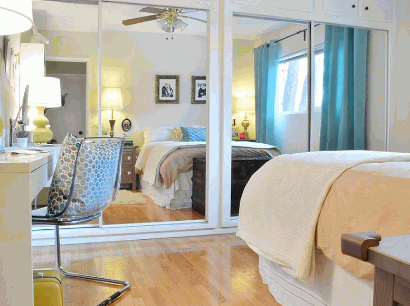
Utilise Vertical Space with Shelves and Wall-mounted Furniture
Maximising vertical space through shelves and wall-mounted furniture can optimise storage capacity and enhance the room's functionality. Utilising wall space efficiently not only adds storage solutions but also contributes to a well-organised and visually appealing bedroom.
When considering bedroom furniture arrangement, incorporating shelves and wall-mounted furniture can offer versatile storage options for items such as books, decor pieces, and personal belongings.
Shelves provide a platform to showcase decorative items while keeping them within reach, adding a personal touch to the room's aesthetic. Wall-mounted furniture like floating nightstands or desks can free up floor space and create a more spacious feel in the bedroom.
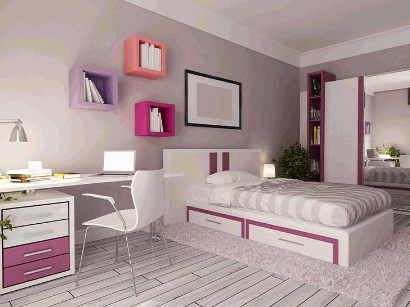
Incorporate Multi-functional Furniture
Multi-functional furniture pieces offer versatility and efficiency in bedroom arrangement. Incorporating items like storage ottomans, convertible beds, or modular units can maximise space utilisation and adapt to changing needs, enhancing the room's adaptability and style.
For example, a storage ottoman not only provides a comfortable seating option but also doubles up as a convenient storage solution for extra blankets or pillows. Convertible beds offer the flexibility of transforming from a settee to a bed, serving as a practical space-saving solution for guest rooms or studio flats.
Modular units, such as shelving systems with adjustable shelves or sliding doors, allow for customisable storage options based on individual requirements and room size.
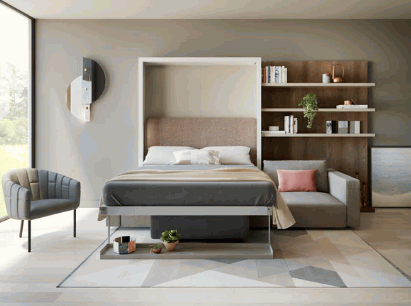
Don't Be Afraid to Experiment and Rearrange
Exploring different furniture arrangements and layouts can lead to fresh perspectives and creative solutions in bedroom design. Don't hesitate to experiment with furniture placement, try new configurations, and rearrange elements to discover the optimal setup that suits your style and needs.
- Integrating innovative elements like multipurpose furniture or statement pieces can add character and uniqueness to the room.
- Consider playing with the balance of sizes and shapes, mixing textures, and exploring different colour schemes to create a harmonious atmosphere.





